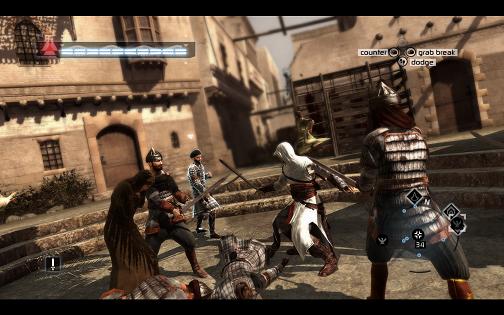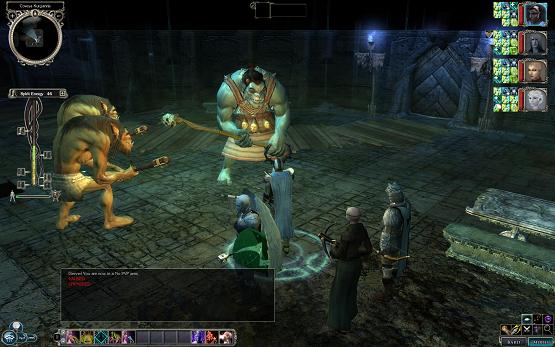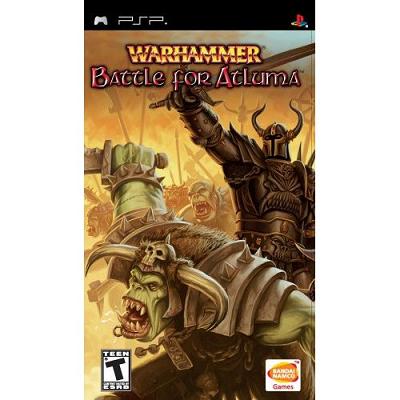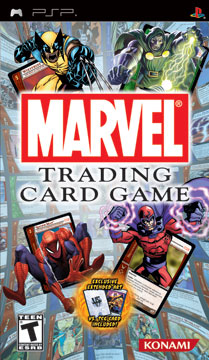
For a game that got into the news so often for all the wrong reasons, beginning with the torrid Jade Raymond affair, to complaints about the unfamiliar controls to the early leak of the PC version and Ubisoft’s subsequent decision to sue the source of the leak for a ridiculous sum of damages, Assassin’s Creed turned out for me to a surprisingly good game. After all, the basic premise of the game sounds fantastic: play as a member of the Hashahin, the original brotherhood of assassins from which the English word “assassin” is itself derived, in the sand-box environment of the Holy Land while the Crusades are raging. There is plenty to be impressed with by this game, so it’s all the more disappointing that it gets so many basic elements so wrong.
First the good stuff. Most of the player’s time is spent controlling Altair, who starts out as an accomplished but somewhat cocky member of the brotherhood. The brotherhood’s aim, as stated by its leader Al Mualim, is to achieve peace in the Holy Land, and as such Altair is sent to assassinate critical targets from both sides of the war, Saracen and Crusader, in order to put an end to the fighting. And I’m not joking when I say that Altair is an accomplished assassin. He can navigate the environment so well, leaping from rooftop to rooftop, clambering up walls and barrelling through crowds that he’d put Lara Croft to shame. He can walk up to a target and effortlessly kill someone so quietly with a hidden blade that someone standing ten paces away won’t even notice. All of these feats are easy to accomplish with the controls, even if they are a bit esoteric and take some effort to learn. Some critics have complained that the near-automatic execution of the parkour-style moves, since Altair will always perform the move most appropriate to the context and the environment, sacrifices actual gameplay for cool visuals. I heartily applaud it however. If I’m supposed to be controlling a skilled assassin, I don’t want to fight the controls to do the cool moves, I want to just be able to tell Altair what I want to do, and he’ll do it.



